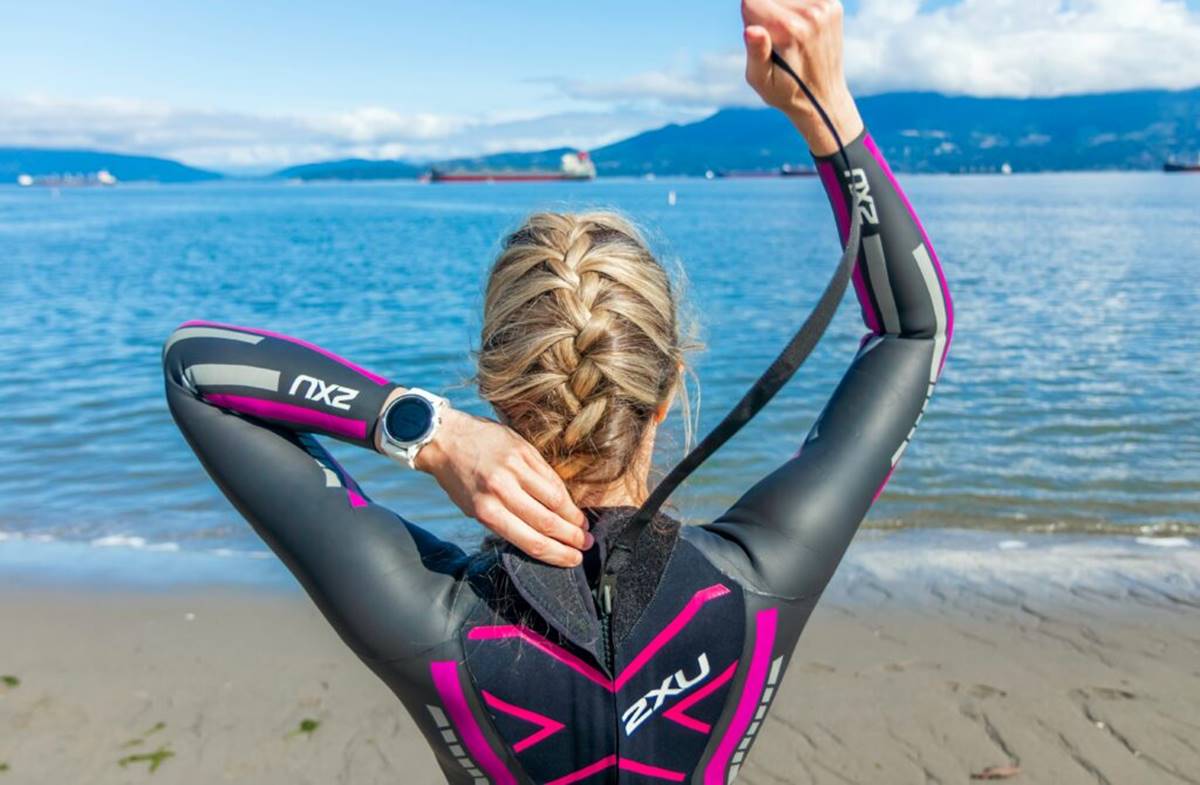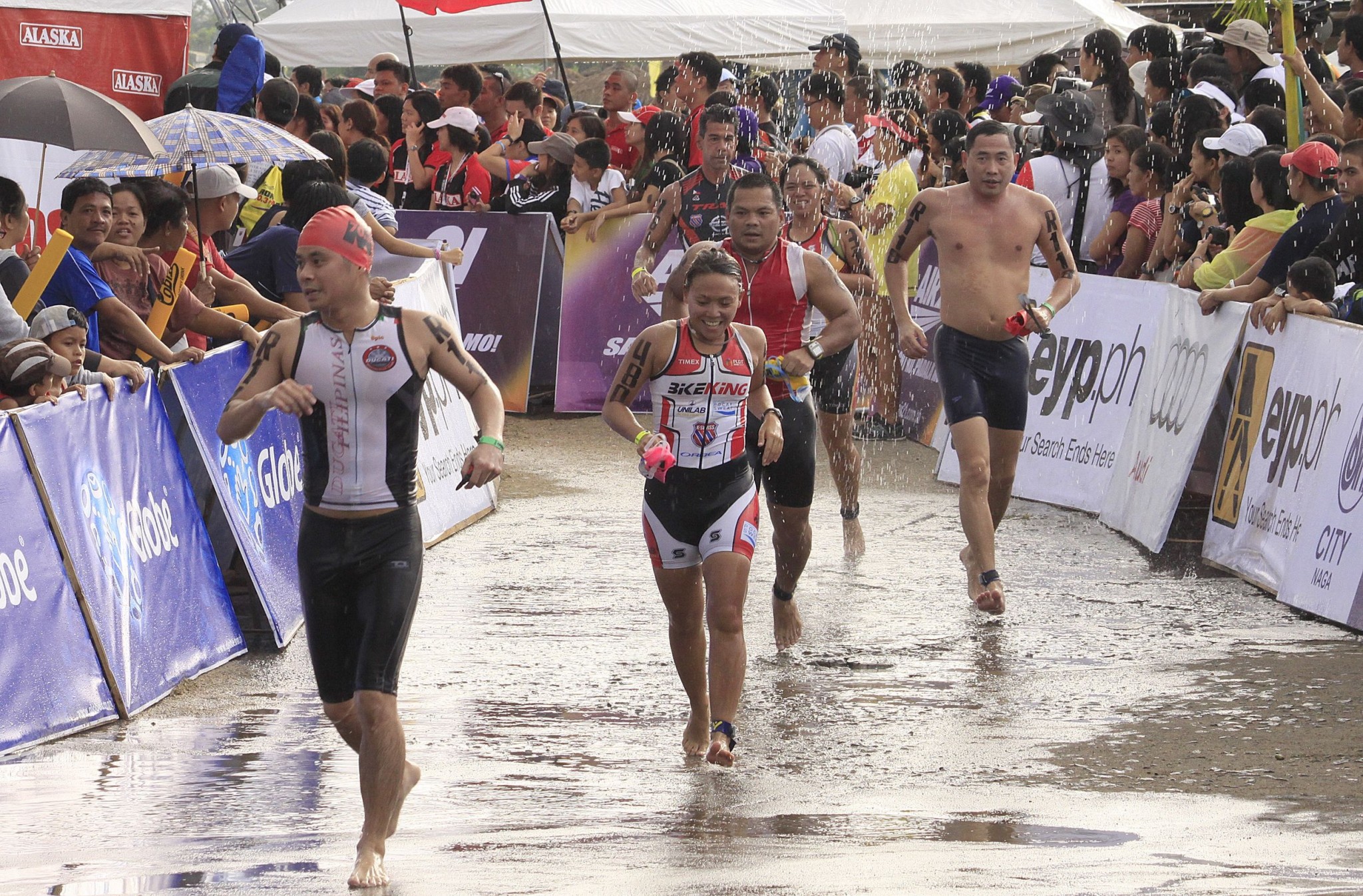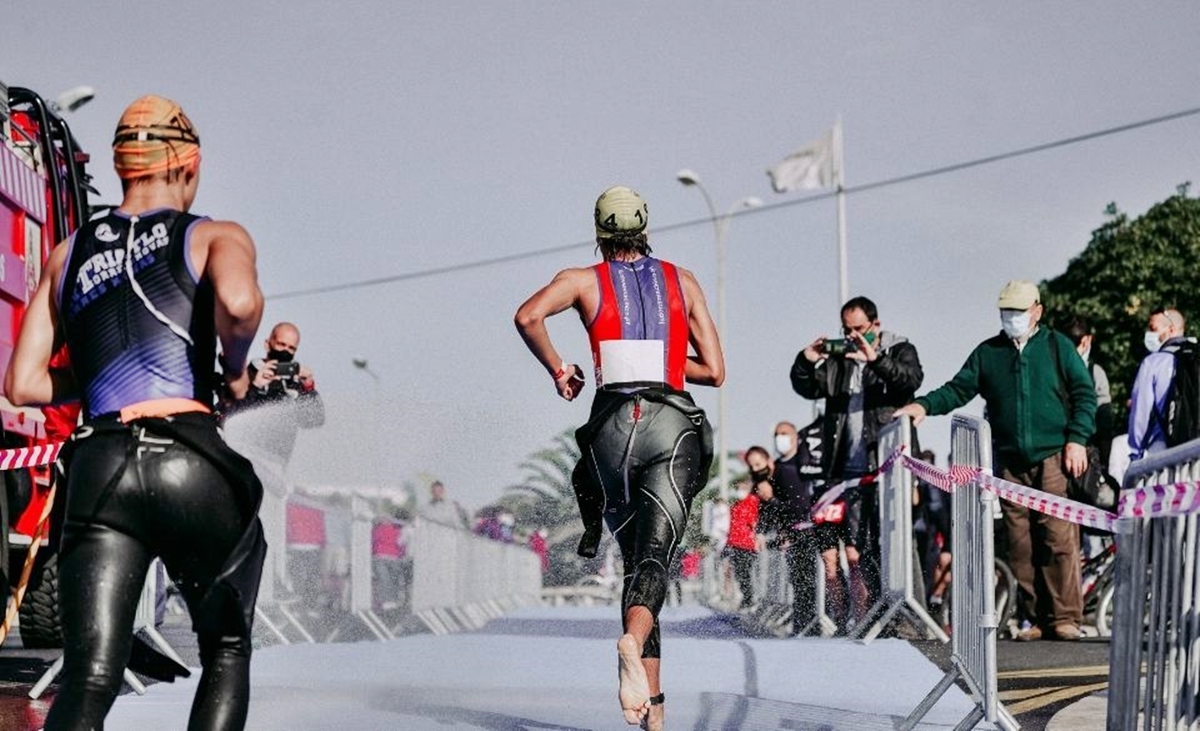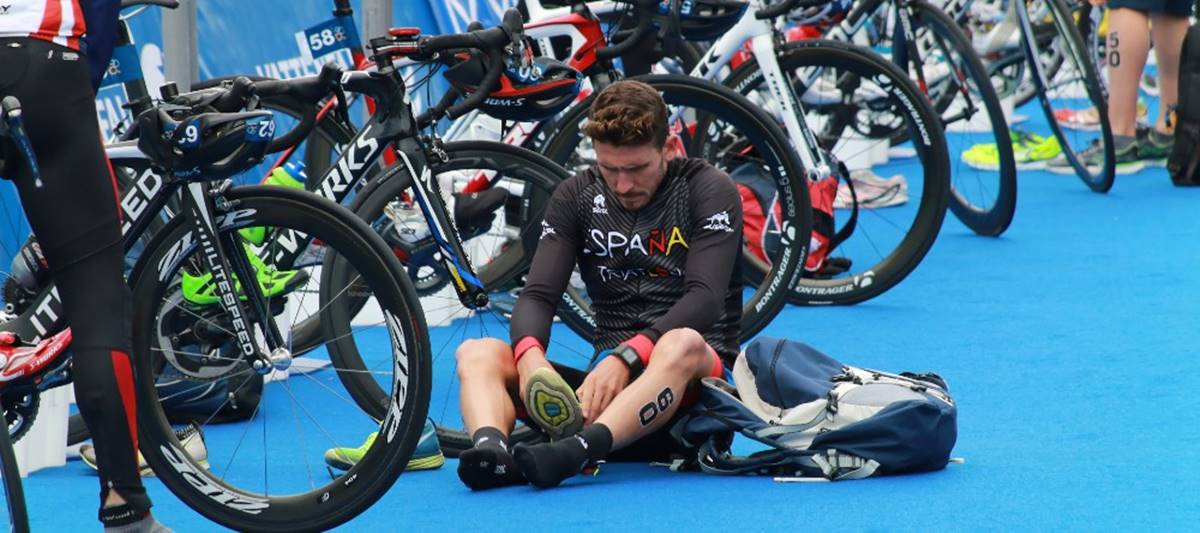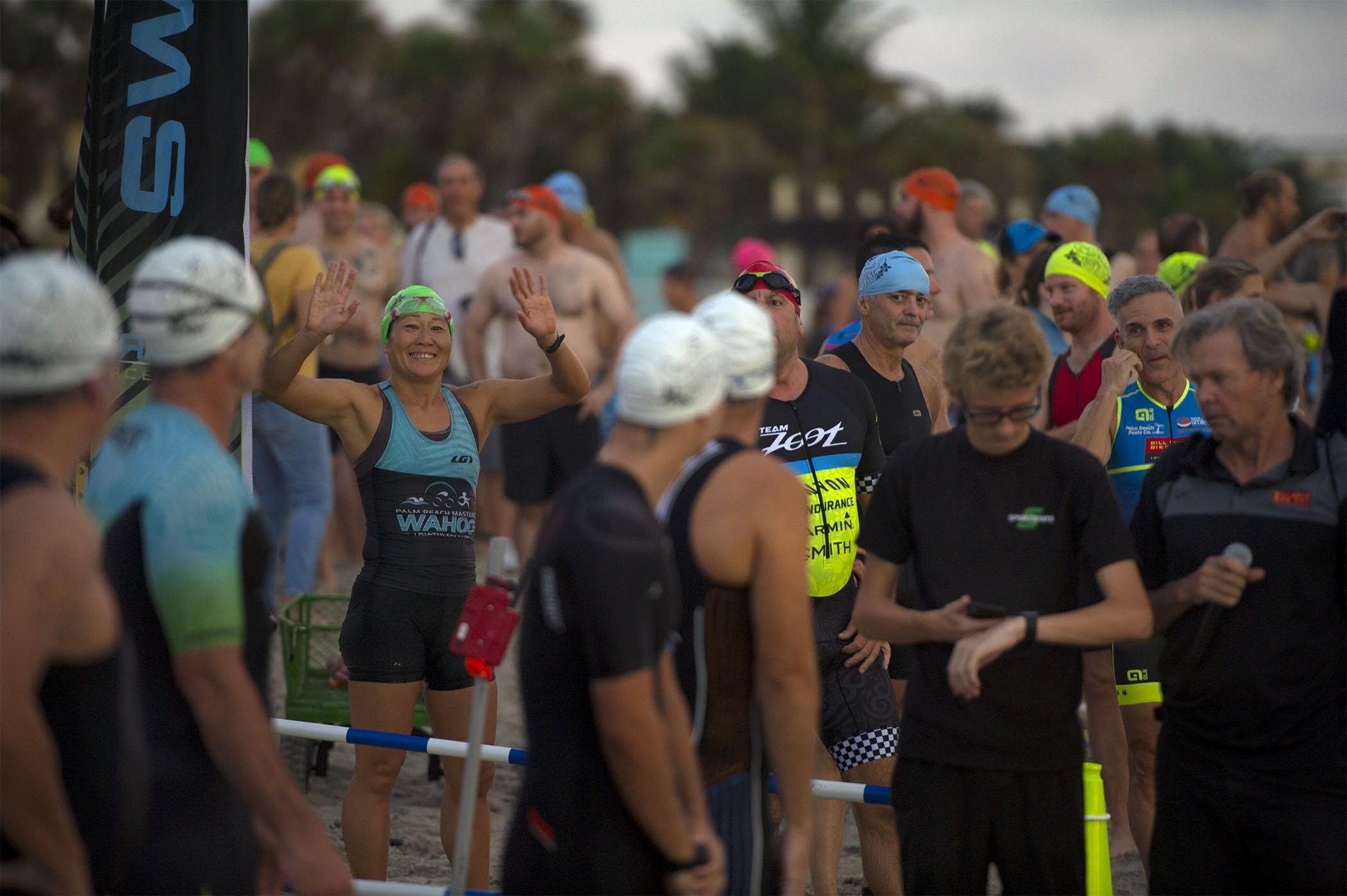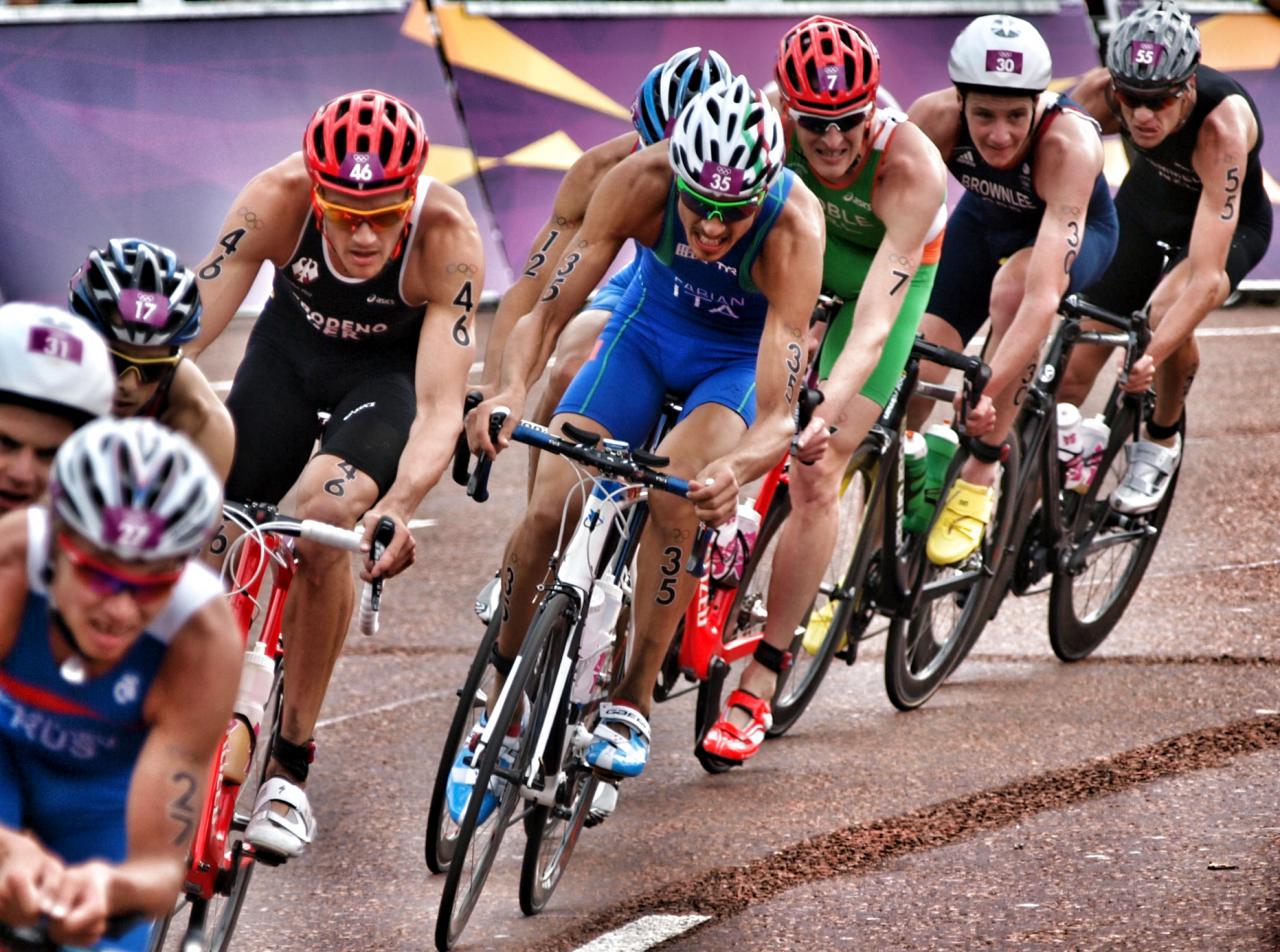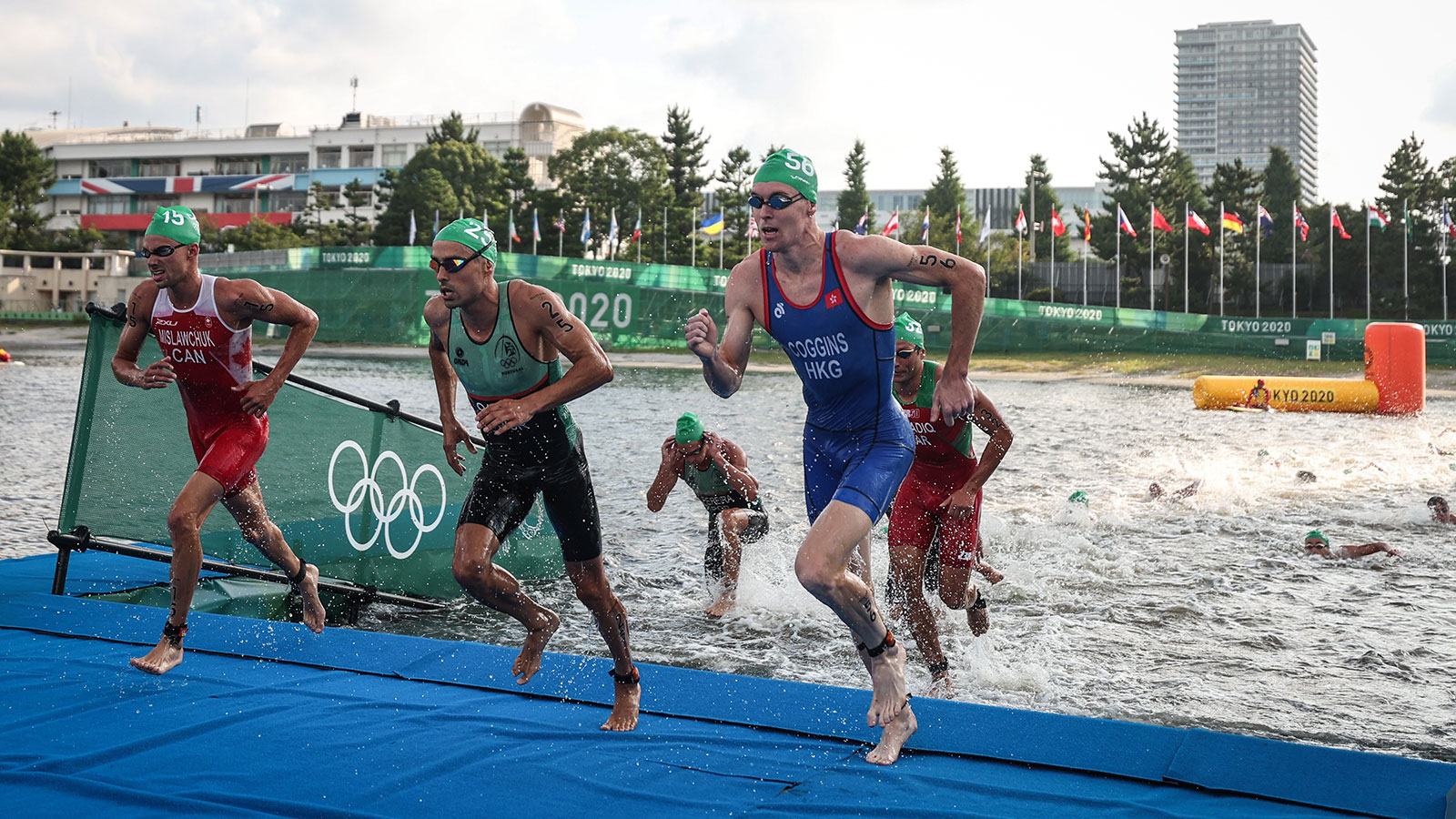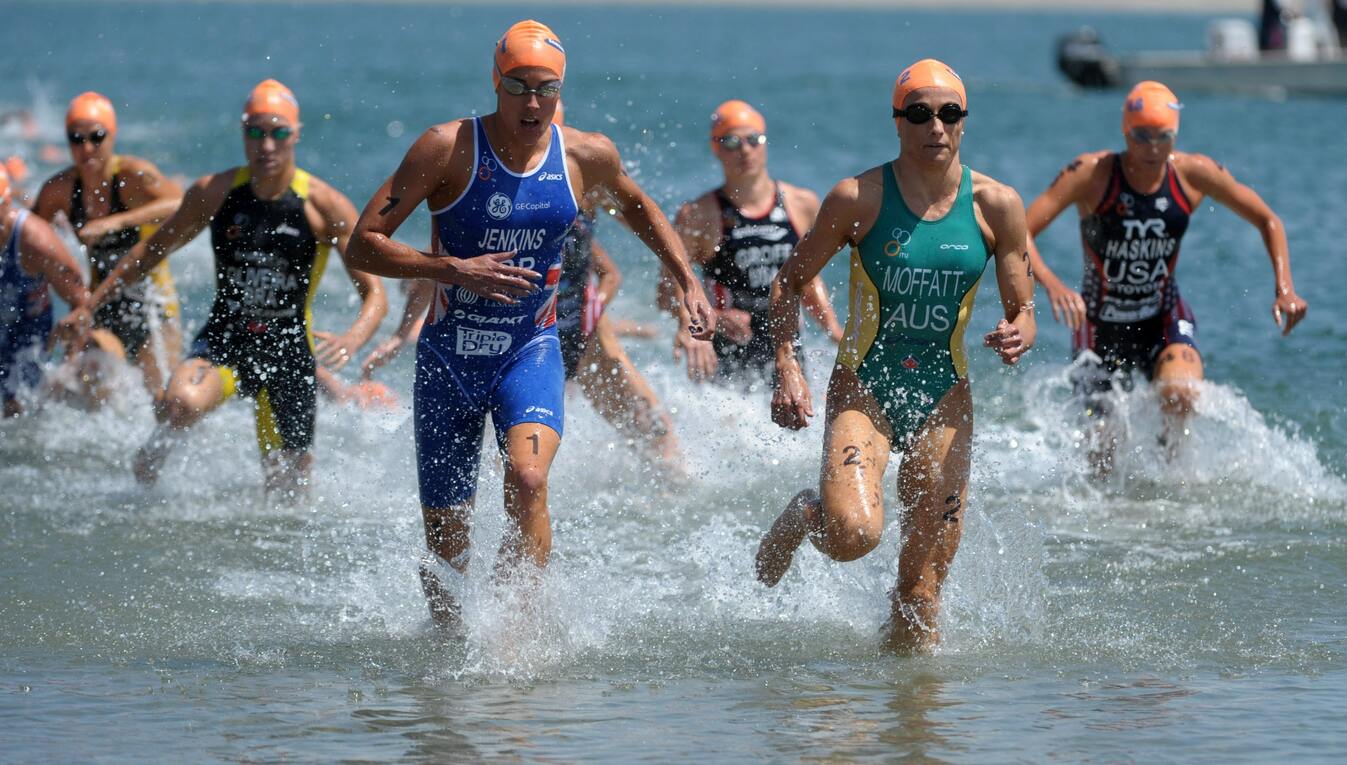Home>Misc>Featured>When Do You Put On Your Wetsuit For A Triathlon
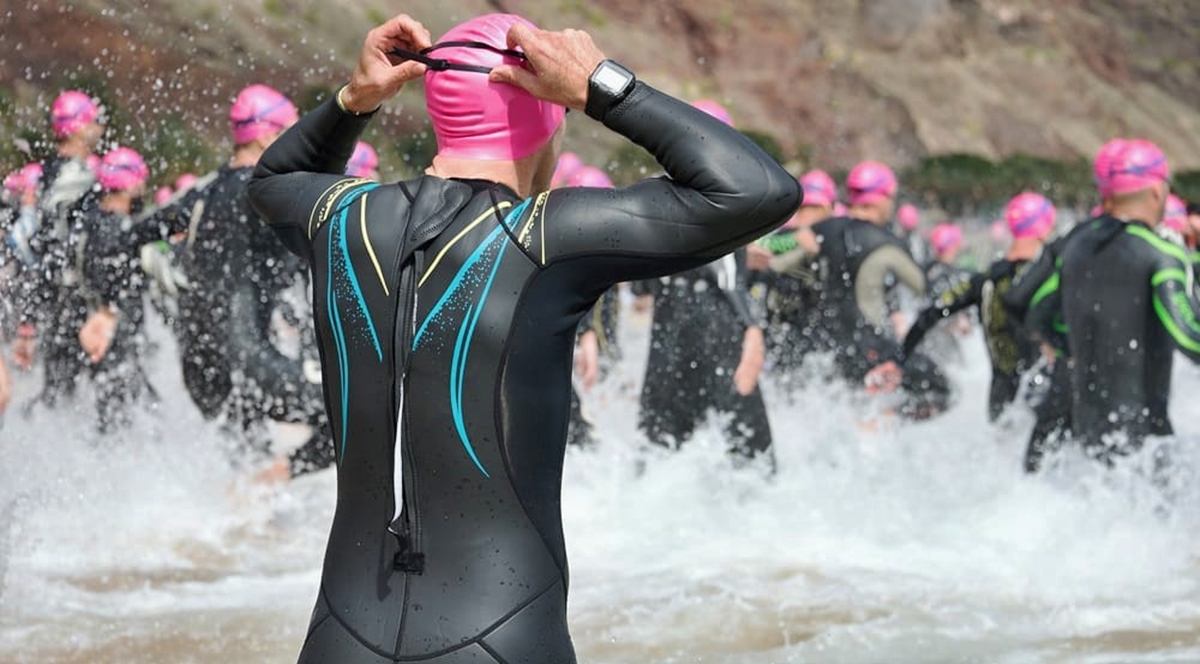

Featured
When Do You Put On Your Wetsuit For A Triathlon
Modified: January 2, 2024
Find out when to put on your wetsuit for a triathlon as we feature expert tips and advice. Don't miss this essential information!
Introduction
When it comes to participating in a triathlon, one of the key considerations is when to put on your wetsuit. The wetsuit not only provides insulation and buoyancy in the water but also plays a crucial role in enhancing your swimming performance. However, the timing of putting on your wetsuit can vary depending on various factors. In this article, we will explore the different aspects involved in deciding when to put on your wetsuit for a triathlon.
Preparing for a triathlon requires careful planning and attention to detail. The wetsuit is an essential piece of equipment that can greatly impact your swim performance. Understanding the optimal timing to put on your wetsuit can give you an advantage right from the start.
Before diving into the specifics, it’s important to note that triathlon rules may vary, and it’s vital to familiarize yourself with the event’s regulations regarding wetsuit usage. Some races have specific guidelines on wetsuit material, thickness, and permissible water temperature for wetsuit usage.
One of the primary considerations when deciding when to put on your wetsuit is the water temperature. The water temperature plays a crucial role in determining the comfort and effectiveness of the wetsuit. Most athletes prefer to wear a wetsuit when the water temperature is at or below a certain threshold, typically around 78 degrees Fahrenheit (25 degrees Celsius).
However, it’s important to keep in mind that different athletes have different levels of comfort in varying water temperatures. Some athletes may opt to wear a wetsuit even in slightly warmer water to gain the added buoyancy and speed advantage. Others may choose to forgo the wetsuit if the water is warmer, as it can potentially cause overheating and restrict freedom of movement.
Aside from the water temperature, it’s essential to familiarize yourself with the specific rules and regulations regarding wetsuit usage in your triathlon event. Some races may have restrictions on wetsuit thickness, material, or even in which race categories they are allowed. Ensure that you are well-informed about the rules to avoid any penalties or disqualifications.
When it comes to putting on the wetsuit, there are two main options: at the start line or before arriving at the start line. Each option has its advantages and considerations. Putting on the wetsuit at the start line allows you to minimize the time spent in the wetsuit and ensures a snug fit. However, it can also add some last-minute stress and anxiety as you juggle putting on the wetsuit while readying yourself for the race.
On the other hand, putting on the wetsuit before arriving at the start line gives you more time to adjust and make sure the wetsuit fits properly. It can also help alleviate any pre-race nerves as you have already donned the wetsuit and can focus on other aspects of your race preparation. However, it’s important to consider the potential discomfort of wearing the wetsuit for an extended period, particularly if the weather is hot or if you have a long walk to the start line.
Pre-Race Preparation
Preparing for a triathlon involves much more than just putting on your wetsuit. It’s crucial to properly prepare yourself physically and mentally for the challenging race ahead. Here are some key aspects of pre-race preparation to keep in mind:
1. Fitness Training: Triathlons require a high level of endurance, strength, and cardiovascular fitness. It’s important to follow a structured training plan that includes swimming, cycling, and running to build the necessary fitness levels. Gradually increase your training load to avoid injuries and overexertion.
2. Wetsuit Fit: Prior to the race, make sure your wetsuit fits properly. An ill-fitting wetsuit can cause discomfort, restrict movement, and affect your performance in the water. Take the time to try on your wetsuit and make any necessary adjustments or repairs.
3. Open Water Practice: If possible, incorporate open water swimming practice into your training routine. This will help you acclimate to swimming in different conditions, simulate race scenarios, and adapt to the temperature and buoyancy provided by the wetsuit.
4. Visualization and Mental Preparation: Mental preparation is just as important as physical training. Spend time visualizing yourself successfully completing the race. Visualize yourself confidently putting on your wetsuit at the right time, smoothly transitioning into the water, and swimming with ease. Building mental resilience will help you stay focused during the race.
5. Nutrition and Hydration: Proper nutrition and hydration play a vital role in your performance. Keep a well-balanced diet leading up to the race, focusing on carbohydrates for energy, and stay hydrated. Avoid trying new foods or drinks on race day to prevent any potential digestive issues.
6. Familiarize Yourself with the Course: Study the triathlon course beforehand to understand the swim, bike, and run segments. Familiarize yourself with any potential challenges, such as currents or navigation, and plan your strategy accordingly. This will give you confidence and a sense of control during the race.
7. Pre-Race Checklist: Before heading to the race venue, create a checklist of all the essential items you need, such as goggles, swim cap, timing chip, bike helmet, nutrition, and of course, your wetsuit. Double-check this list to ensure you haven’t forgotten anything crucial.
By taking these pre-race preparation steps, you will be well-equipped physically, mentally, and logistically to tackle the challenges of the triathlon. Remember, the goal is not just to finish the race but to enjoy the entire journey and embrace the sense of accomplishment that comes with crossing the finish line.
Determining the Water Temperature
Before deciding when to put on your wetsuit for a triathlon, it’s important to determine the water temperature. The water temperature not only affects your comfort but also plays a significant role in wetsuit regulations and your overall performance. Here are some ways to determine the water temperature:
1. Event Organizer Information: The triathlon event organizers usually provide information about the water temperature leading up to the race. They may measure the temperature on the race morning or provide historical data from previous years. Check the event website or reach out to the organizers to obtain this information.
2. Local Weather Reports: Monitoring local weather reports can give you a general idea of the water temperature on race day. However, keep in mind that weather conditions can vary, and the water temperature might be slightly different from the predicted air temperature. Use weather reports as a guide but rely on official measurements from the event organizers.
3. Swim Warm-Up: If allowed by the event organizers, take advantage of the swim warm-up period to assess the water temperature. Dip your hand or feet into the water to get a sense of its temperature. While this might not provide an accurate reading, it can help you gauge the overall feel of the water.
4. Personal Experience: If you have previous experience swimming in similar bodies of water, you may have a good sense of how the water temperature feels. This can give you a general idea of whether you would be comfortable wearing a wetsuit or if the water is warm enough to swim without one.
Once you have determined the water temperature, you can assess whether wearing a wetsuit would be beneficial for your swim. As a general guideline, most athletes opt to wear a wetsuit when the water temperature is at or below 78 degrees Fahrenheit (25 degrees Celsius). However, individual preferences and comfort levels may vary.
It’s important to note that some triathlon events may have specific rules regarding wetsuit usage based on water temperature. These rules are typically designed with safety and fairness in mind. Familiarize yourself with the regulations of your specific race to ensure compliance and avoid any penalties or disqualifications.
By accurately determining the water temperature, you can make an informed decision about wearing a wetsuit and optimize your performance during the swim portion of the triathlon.
Wetsuit Rules and Regulations
When participating in a triathlon, it’s crucial to be aware of the rules and regulations regarding wetsuit usage. These guidelines ensure fair competition and participant safety. Here are some key considerations when it comes to wetsuit rules and regulations:
1. Permissible Water Temperature: Most triathlon events have specific regulations regarding the water temperature at which wetsuit usage is permitted. This threshold is typically around 78 degrees Fahrenheit (25 degrees Celsius). If the water temperature falls below this threshold, wearing a wetsuit is often allowed. However, if the water temperature exceeds this limit, wetsuit usage may be restricted or prohibited.
2. Wetsuit Thickness: In addition to water temperature, some events may also have guidelines regarding the thickness of the wetsuit material. The thickness is often measured in millimeters and can vary between events. Ensure that your wetsuit complies with the specified thickness requirements to avoid any penalties or disqualification.
3. Material and Design: Triathlon wetsuits are specifically designed to provide buoyancy and improve swim performance. Events may have specific rules regarding wetsuit materials and designs. It’s important to ensure that your wetsuit meets the designated guidelines to avoid any rule violations.
4. Race Categories: Depending on the race, there may be different wetsuit rules and regulations for different race categories. For example, some events may have separate rules for amateurs, professionals, or age-group categories. Familiarize yourself with the rules specific to your race category to ensure compliance.
5. Non-Wetsuit Option: In certain cases, events may provide a non-wetsuit option for participants. This is often referred to as the “skin” or “swimskin” option, which is a thin, hydrophobic garment that mimics some of the benefits of a wetsuit without the added buoyancy. If you choose the non-wetsuit option, ensure that your swimskin complies with the event regulations.
It’s important to thoroughly review the rulebook and guidelines provided by the event organizers. These rules are put in place to ensure a fair and safe competition for all participants. Violating the wetsuit rules and regulations may result in penalties, time penalties, or even disqualification from the event.
By understanding and complying with the wetsuit rules and regulations, you can ensure a smooth and enjoyable race experience while maintaining the integrity of the triathlon event.
Putting on the Wetsuit at the Start Line
Putting on your wetsuit at the start line is a popular option for many triathletes. This approach allows you to minimize the time spent in the wetsuit before the race begins. Here are some key considerations when putting on your wetsuit at the start line:
1. Efficient Timing: Putting on your wetsuit at the start line requires efficient time management. Arrive at the start line with enough time to complete the process without feeling rushed. Give yourself ample time to properly put on the wetsuit, adjust any straps, and ensure a snug fit.
2. Warm-Up in Wetsuit: If possible, take advantage of any pre-race warm-up opportunities to swim a short distance while wearing your wetsuit. This not only helps familiarize yourself with the buoyancy and feel of the wetsuit in the water but also ensures that it fits properly and allows for comfortable movement.
3. Assistance from Others: Putting on a wetsuit can be challenging, especially when you are in a rush or feeling nervous before the race. If available, ask a friend, family member, or fellow triathlete for assistance. A second pair of hands can ensure a smooth and quick wetsuit application.
4. Check for Proper Fit: Ensure that your wetsuit is properly fitted before putting it on at the start line. Make sure there are no wrinkles, folds, or excess material that could cause discomfort or restrict movement during the swim. It’s recommended to practice putting on the wetsuit beforehand to familiarize yourself with the process and ensure a good fit.
5. Personal Comfort: Consider your personal comfort level when putting on your wetsuit at the start line. Some athletes may find it more comfortable to have the wetsuit on for a shorter duration before the swim. However, others may feel more at ease if they have already put on the wetsuit and can focus on other aspects of race preparation.
While putting on your wetsuit at the start line offers the advantage of minimal time spent in the wetsuit before the race, it’s important to weigh this against any potential added stress or distractions it may cause. Make a decision based on your personal preferences, comfort, and the overall race dynamics.
With practice and experience, putting on your wetsuit at the start line can become a smooth and efficient process, setting you up for a successful swim leg in your triathlon.
Putting on the Wetsuit Before Arriving at the Start Line
Putting on your wetsuit before arriving at the start line is an alternative approach that allows you to have more time to adjust and get ready for the race. Here are some key considerations when putting on your wetsuit before arriving at the start line:
1. Arrive Early: To ensure ample time for wetsuit application and adjustments, plan to arrive at the race venue early. This gives you the opportunity to find a suitable space, lay out your gear, and calmly put on your wetsuit without feeling rushed.
2. Adjust and Fine-Tune: Putting on your wetsuit before arriving at the start line allows you to have more time to adjust and fine-tune the fit. Take the time to make sure all the panels are in their proper place, adjust the neck, arms, and legs to ensure a comfortable fit, and smooth out any wrinkles or folds.
3. Familiarize Yourself with the Wetsuit: By putting on the wetsuit early, you have the advantage of becoming acclimatized to its feel and mobility. Take a few minutes to move around, stretch, and simulate swim movements to ensure that the wetsuit allows for optimal range of motion and doesn’t restrict your movement.
4. Mental Preparation: Putting on your wetsuit before arriving at the start line gives you more time to mentally prepare for the race. Once you have the wetsuit on and adjusted, you can focus on other aspects of race preparation, such as visualizing the course, reviewing your race strategy, or calming any pre-race nerves.
5. Weather Considerations: Depending on the weather conditions, putting on the wetsuit before arriving at the start line can help you stay warm, especially if the race venue is in a colder climate or if the race start is delayed. This ensures that you are comfortable and ready to perform to the best of your abilities when the race begins.
6. Consider Potential Discomfort: It’s important to note that wearing a wetsuit for an extended period of time, especially in warmer weather, may cause discomfort. Consider factors such as the weather, distance from changing area to the start line, and your personal tolerance for wearing the wetsuit for an extended time.
Putting on your wetsuit before arriving at the start line gives you the advantage of starting the race with a well-adjusted and comfortable wetsuit while allowing you extra time to mentally prepare for the race. Consider the race dynamics, weather conditions, and your personal comfort level before making a decision on when to put on your wetsuit.
Factors to Consider when Deciding when to Put on the Wetsuit
Deciding when to put on your wetsuit for a triathlon involves considering various factors that can impact your comfort, performance, and overall race experience. Here are some key factors to consider when making this decision:
1. Water Temperature: The water temperature is a crucial factor when deciding whether or not to wear a wetsuit. Most triathletes prefer to wear a wetsuit when the water temperature is at or below a certain threshold, typically around 78 degrees Fahrenheit (25 degrees Celsius). Consider the comfort and buoyancy advantages provided by the wetsuit at different water temperatures.
2. Personal Comfort: Each athlete has their own comfort level when it comes to wearing a wetsuit. Some athletes may prefer the added buoyancy and feeling of security provided by the wetsuit, even in slightly warmer water. Others may find the wetsuit restrictive or uncomfortable, especially in warmer conditions. Assess your personal comfort with wearing the wetsuit and how it affects your swimming performance.
3. Wetsuit Fit and Adjustment: Proper wetsuit fit is crucial for optimum performance. Consider the time needed to ensure the wetsuit fits properly, make necessary adjustments, and fine-tune the fit. Putting on the wetsuit at the start line may allow for a snugger fit, while putting it on before arriving at the start line gives you more time to check and adjust the fit.
4. Race Dynamics: Evaluate the specific race dynamics before deciding when to put on your wetsuit. Consider the time required to get from the changing area to the start line and the race schedule. If the transition area is close to the start line or if there is a significant delay between the transition area and the race start, it may be more convenient to put on the wetsuit at the start line.
5. Personal Preference and Confidence: Consider your personal preference and confidence level when it comes to putting on the wetsuit. Some athletes may feel more confident having the wetsuit on early, allowing them to focus on other aspects of race preparation. Others may prefer the adrenaline rush of putting on the wetsuit at the start line. Assess what makes you feel most comfortable and confident for the swim leg of the triathlon.
When making the decision of when to put on your wetsuit, it’s crucial to consider the water temperature, personal comfort, wetsuit fit, race dynamics, and personal preference. By taking these factors into account, you can make an informed decision that maximizes your performance and enhances your overall triathlon experience.
Conclusion
Deciding when to put on your wetsuit for a triathlon is an important decision that can impact your comfort, performance, and overall race experience. Factors such as water temperature, personal comfort, wetsuit fit, race dynamics, and personal preference all play a role in making this decision.
Understanding the permissible water temperature and the rules and regulations regarding wetsuit usage in your specific triathlon event is crucial. This allows you to comply with the guidelines and avoid penalties or disqualifications. Additionally, ensuring that your wetsuit fits properly and is adjusted to your liking enhances your comfort and swimming performance.
Deciding whether to put on your wetsuit at the start line or before arriving at the start line depends on personal preference, race dynamics, and the time required for fit adjustments. Putting on the wetsuit at the start line can minimize the time spent in the wetsuit before the race, while putting it on beforehand allows for more time to fine-tune the fit and mentally prepare.
Ultimately, finding the right timing to put on your wetsuit is a personal choice that should align with your comfort, confidence, and race strategy. Consider the various factors, gather information about the water temperature, and evaluate your personal preferences before making a decision.
Remember, triathlons are not only about the finish line but also about the journey. Whether you choose to put on your wetsuit early or at the start line, enjoy the experience, embrace the challenges, and savor every moment as you swim towards your triathlon goals. Good luck!
